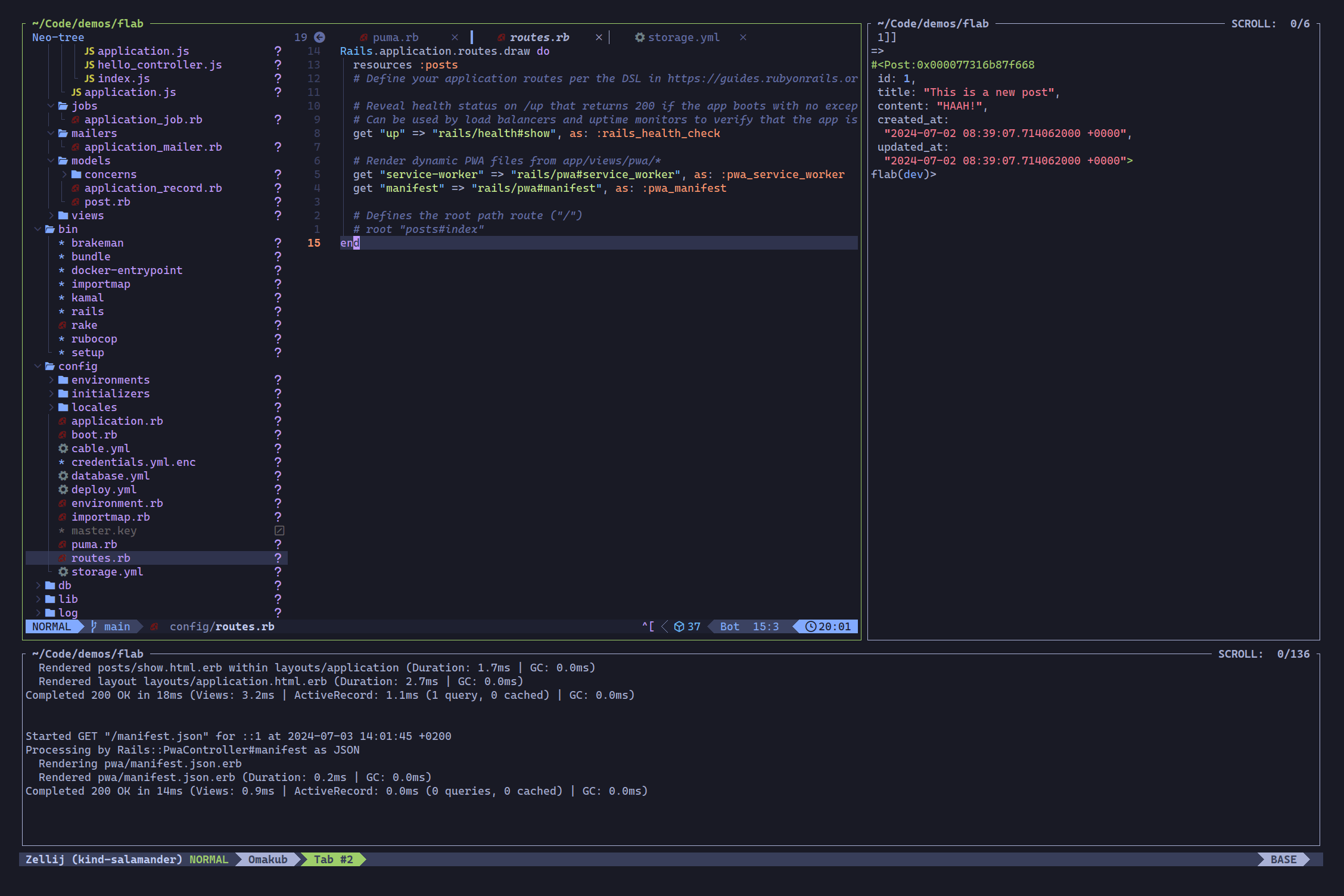Terminal
Omakub's default terminal is called Alacritty. It's GPU-accelerated, so it's really fast, and it's highly configurable. Inside this terminal, we run Zellij, which is what's called a "terminal multiplexer". That's a fancy word for a tool that gives you panes, tabs, and persistent sessions inside your terminal.
Alacritty
You can change the font and size using the Omakub application or by editing ~/.config/alacritty/alacritty.toml. But leave the referenced imports in place, if you want Omakub to be able to theme Alacritty together with the rest of the system.
If you want to further tweak the terminal, see the Alacritty configuration documentation.
Note: Alacritty is configured without Gnome decoration, that is, without the normal system title bar. That makes it look a lot better, especially when color-coordinated with the beautiful themes in Omakub. But it also means you don't have the standard handle to drag the window around with. Instead, hold down super, then click and drag anywhere in the window. To resize, press Super + Backspace, and you can resize the window with the mouse.
Zellij
You create a new tab in Zellij using Ctrl + G T N. This tab can be renamed using Ctrl + G T R. You move between tabs (and panes) with Alt + Arrows.
Tabs can have multiple panes, splitting it into vertical and horizontal chunks. Press Ctrl + G P R to create a new pane on the right side of the tab. Press Ctrl + G P D to create one on the bottom of the tab. Again, use Alt + Arrows to move between these panes.
You can even create a floating pane with Ctrl + G P W. This is especially nice when you just need to run a quick command without losing your place. Hide the floating pane by pressing Ctrl + G P W again.
When you have a nicely running Zellij session with multiple tabs and panes, it's helpful to save this as a session you can return to later. Press Ctrl + G O D to save and quit the current session. When you open the terminal again, press Ctrl + G O W to see the list of sessions, and press enter to revive the one you want.
When learning Zellij, it can be nice to see the command hints at the bottom of the screen. Edit ~/.config/zellij/config.kdl and remove the line that sets the default_layout to "compact". Then you'll see this at the bottom of the terminal:
See the Zellij documentation for more details.
Scrolling
You can scroll back in the terminal history using your mouse scroll wheel or trackpad as you expect. But if you want to search or copy or manipulate the history, you can press Ctrl + S E to enter "scroll edit mode", which takes you inside your editor to see the history. By default, this happens in Neovim. Remember it's :q to quit!
